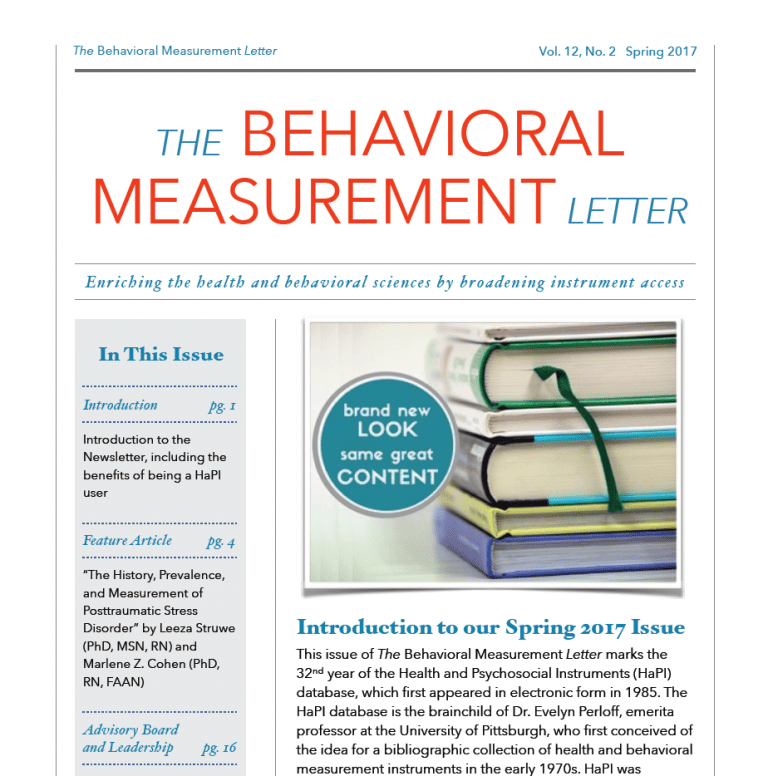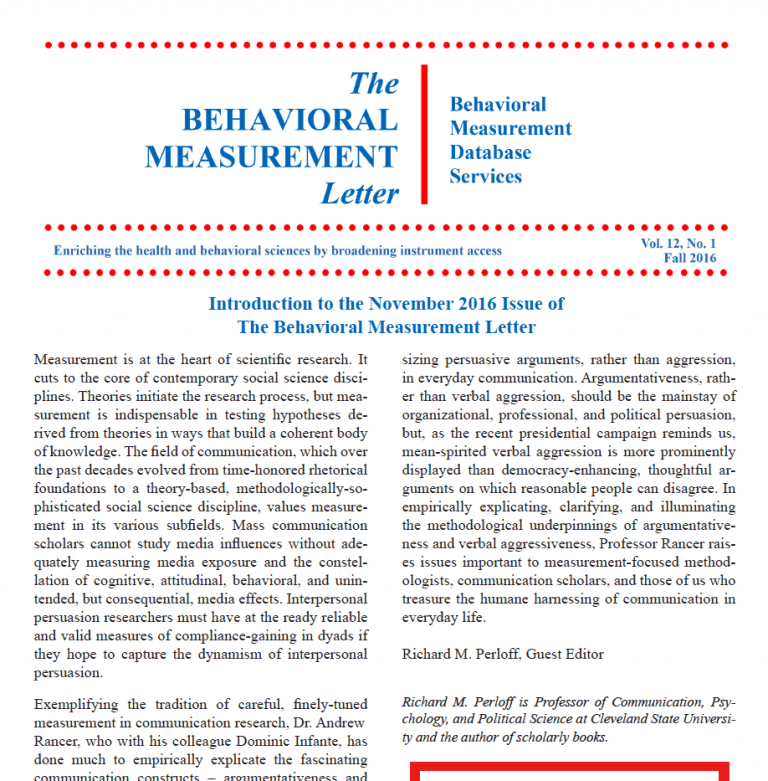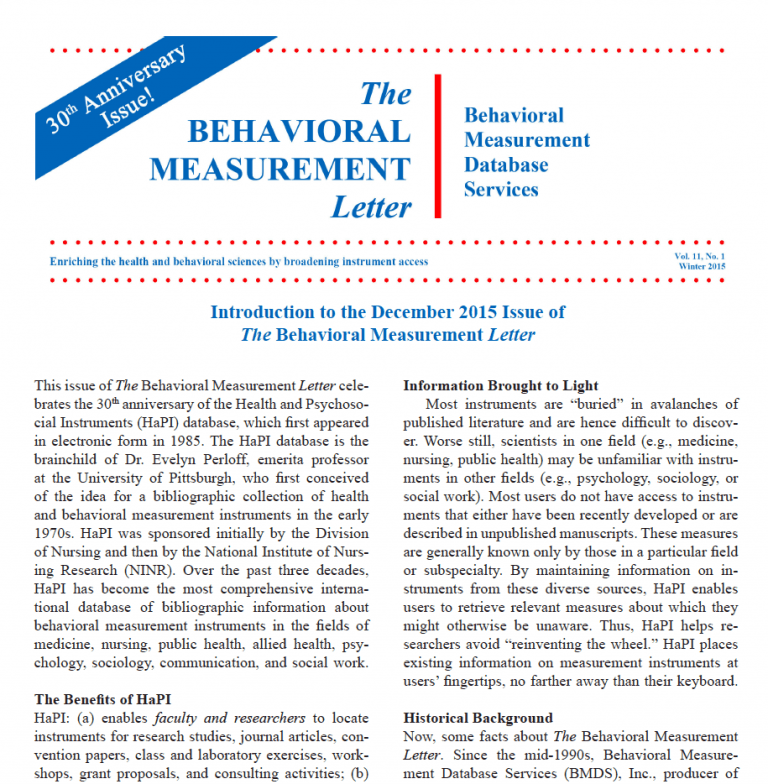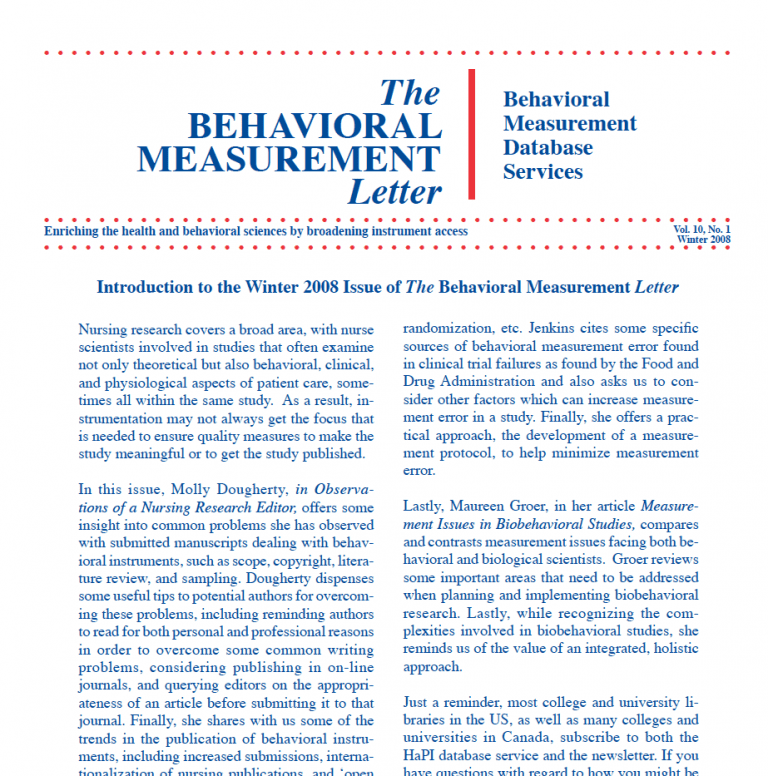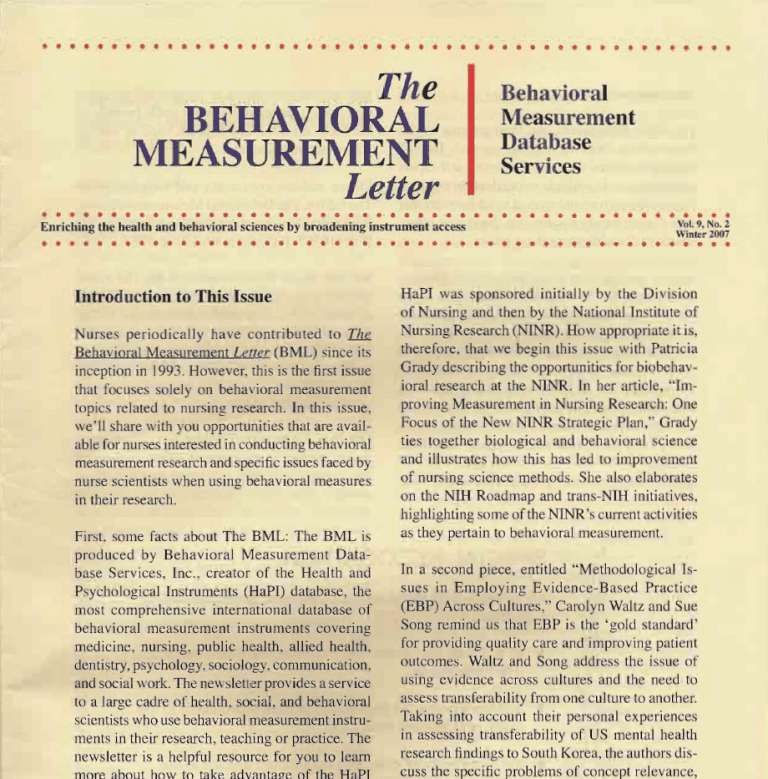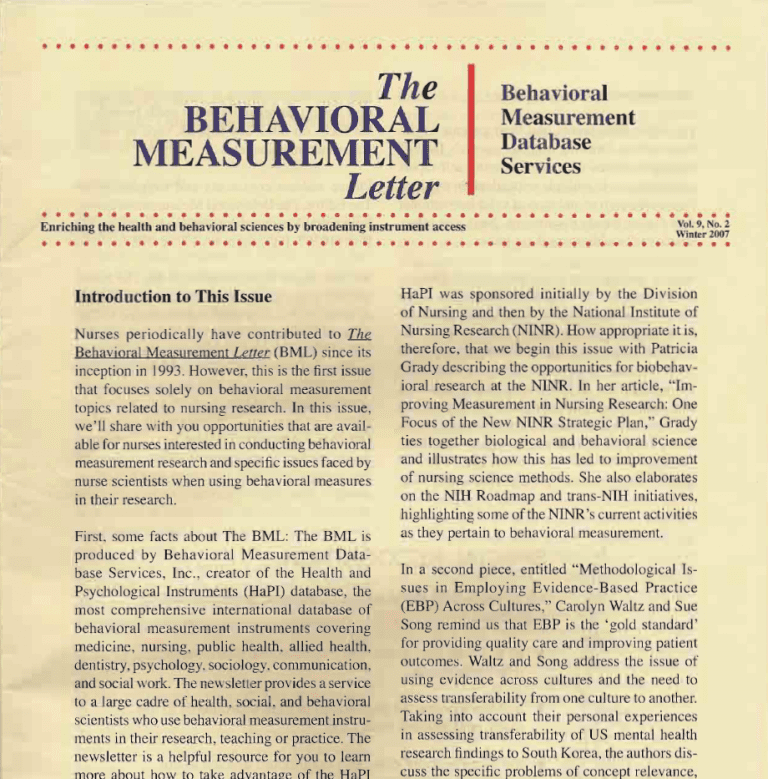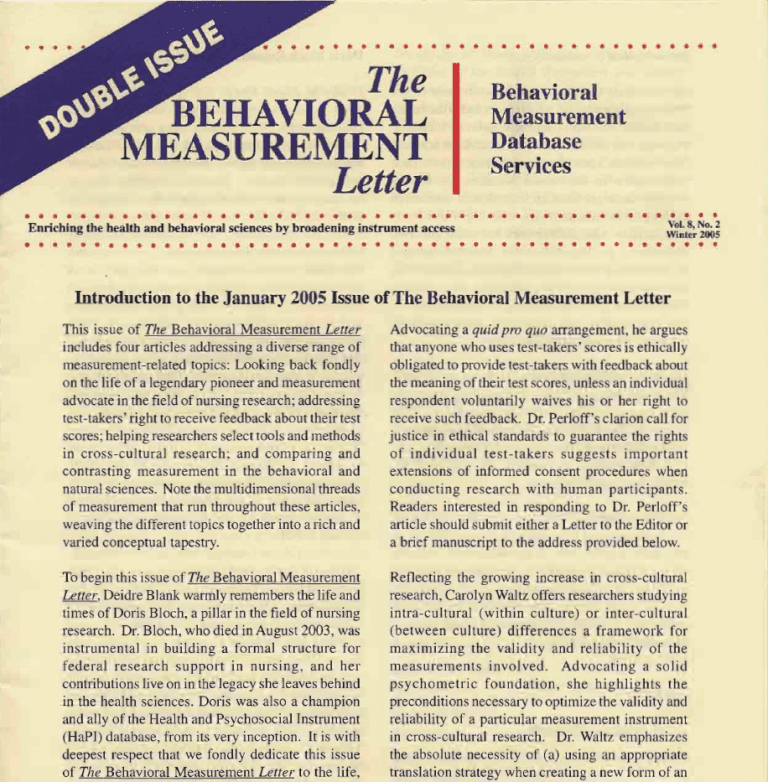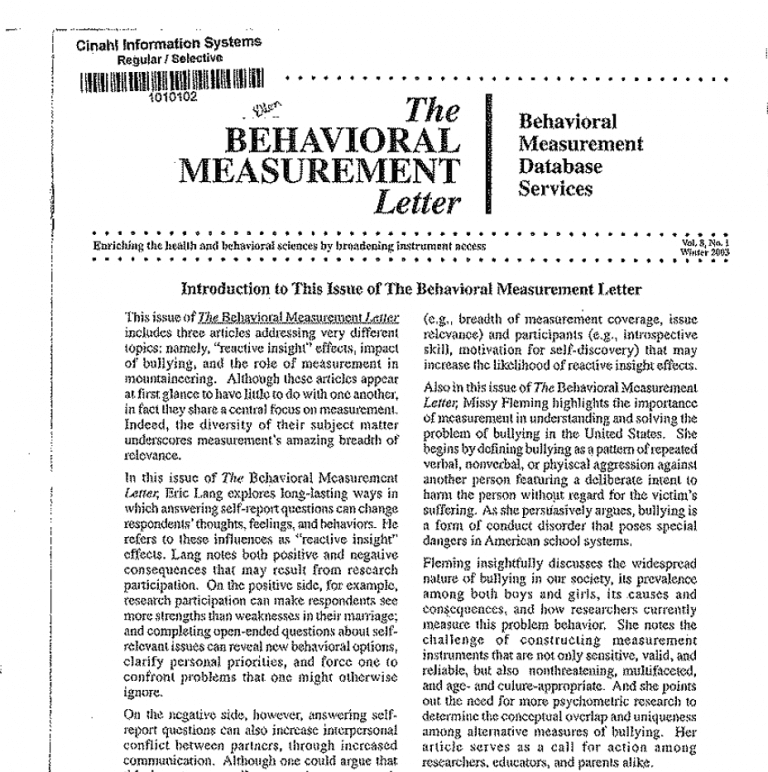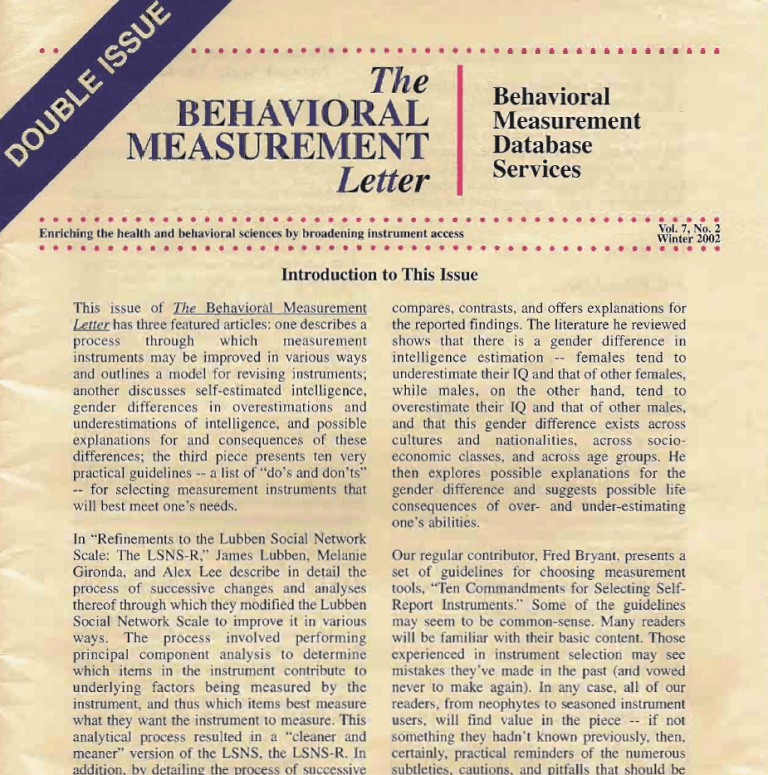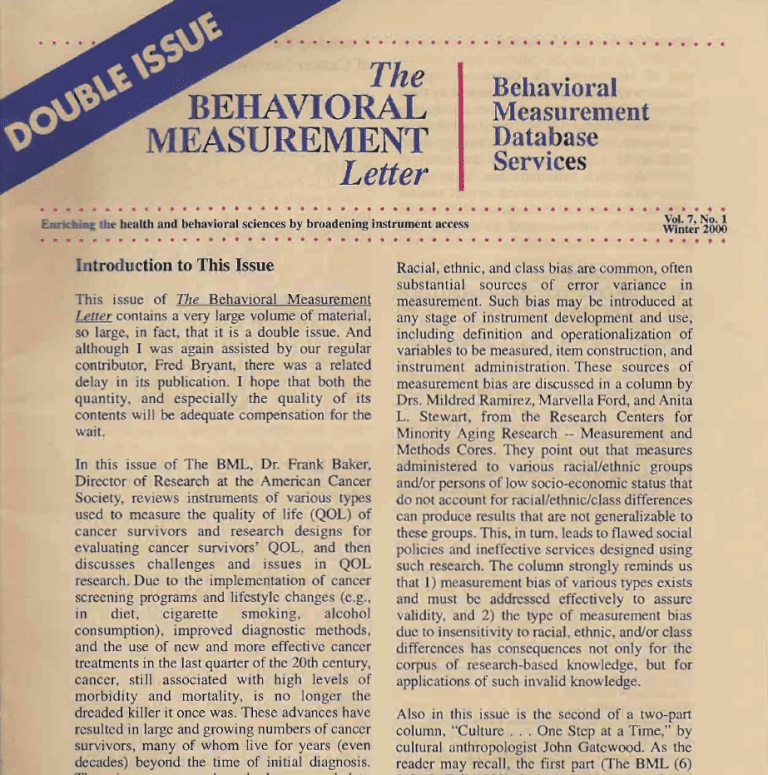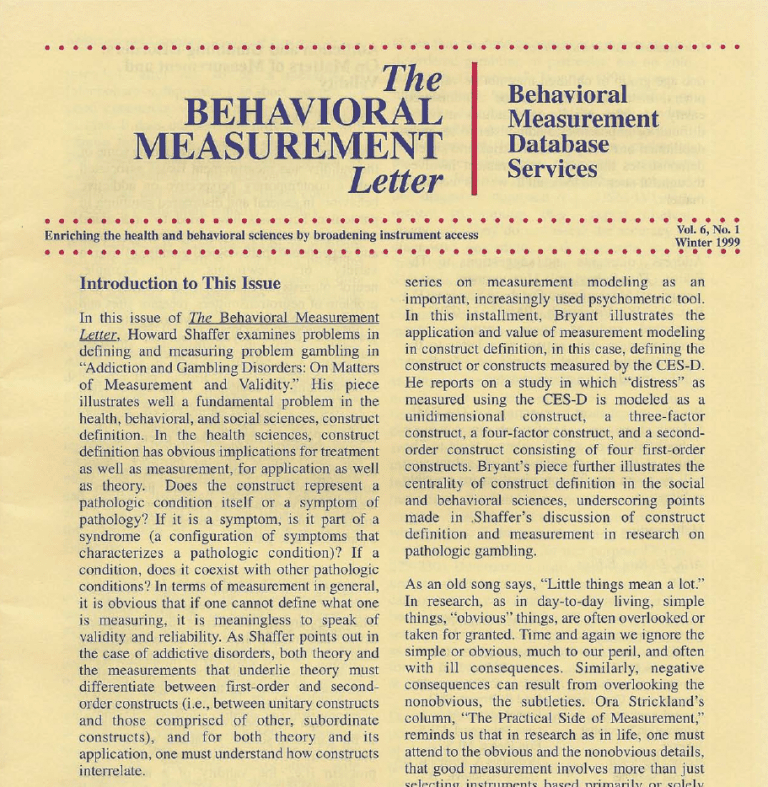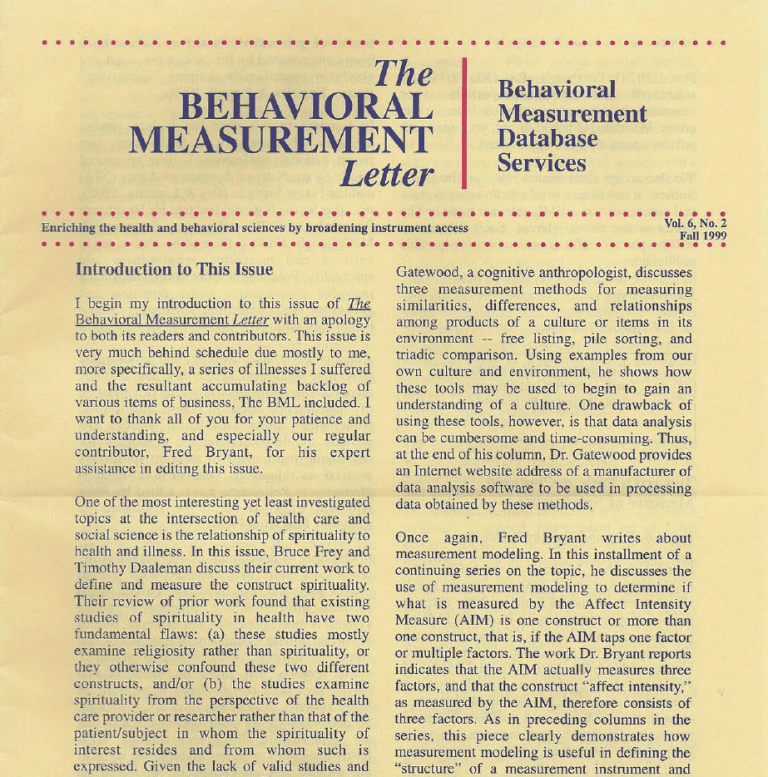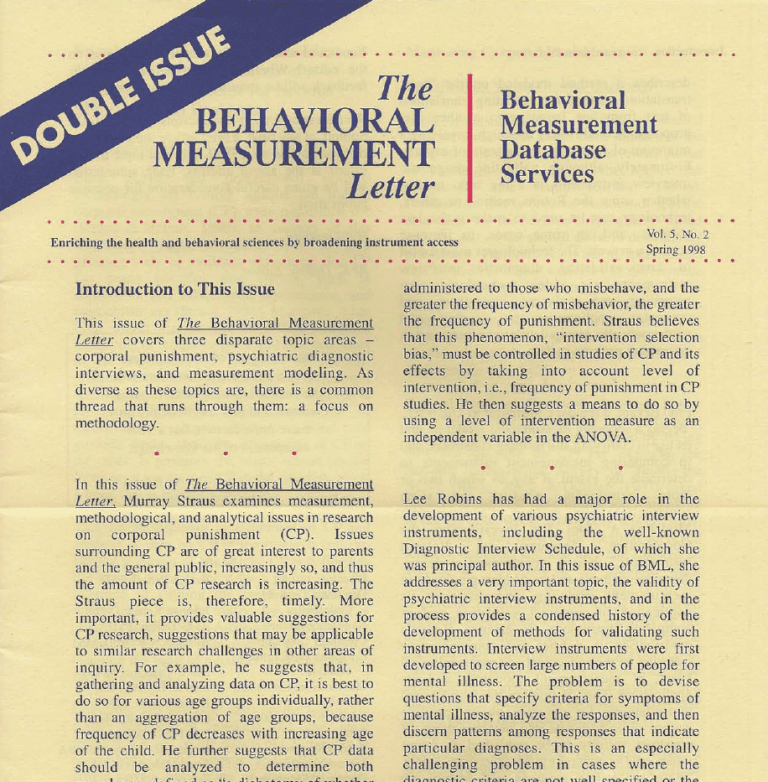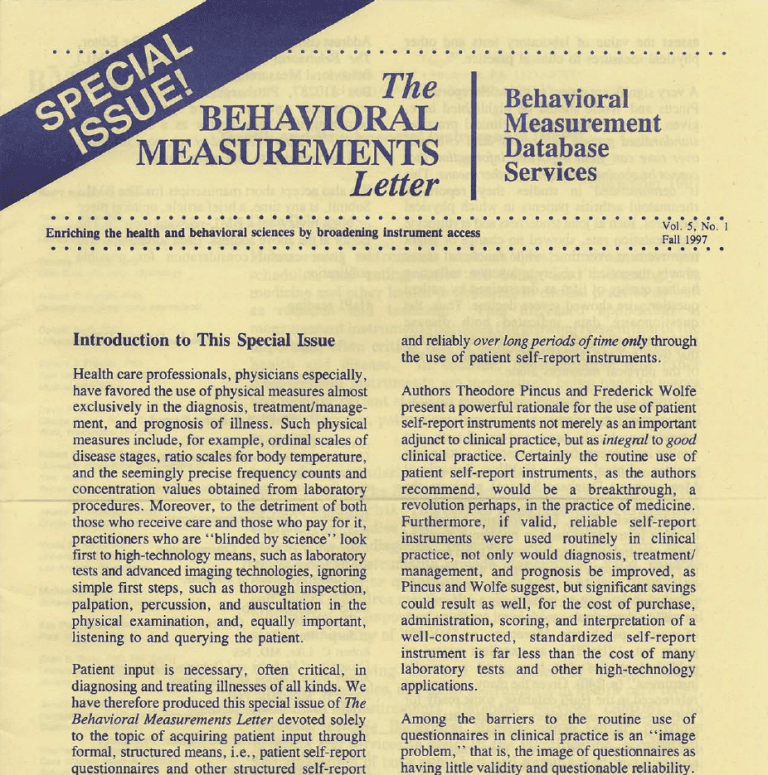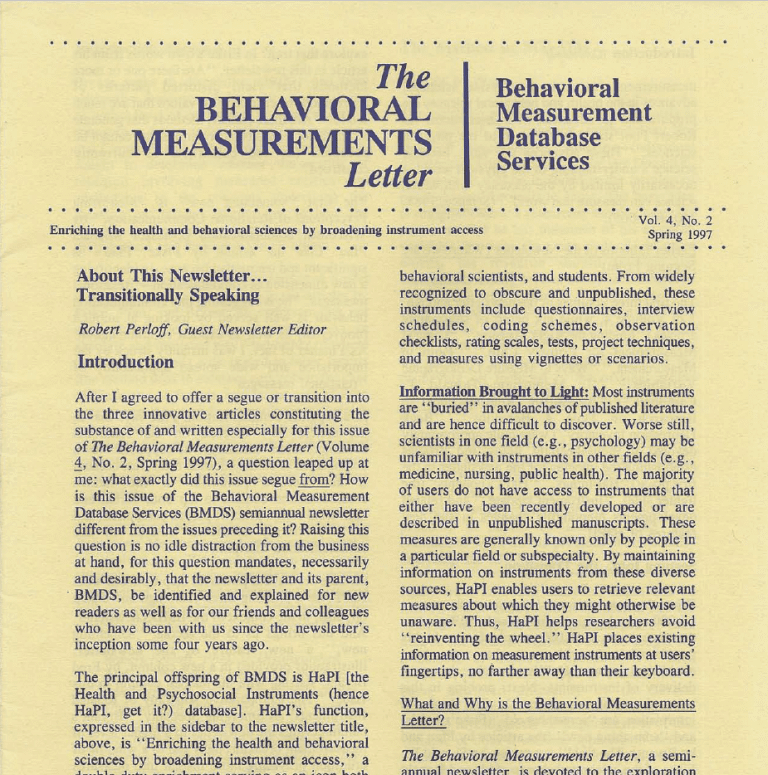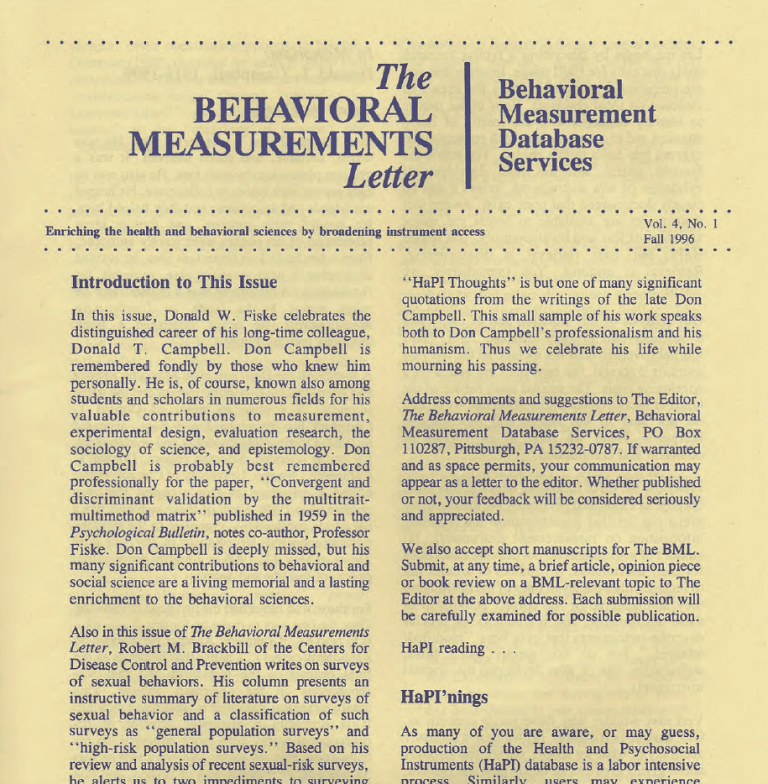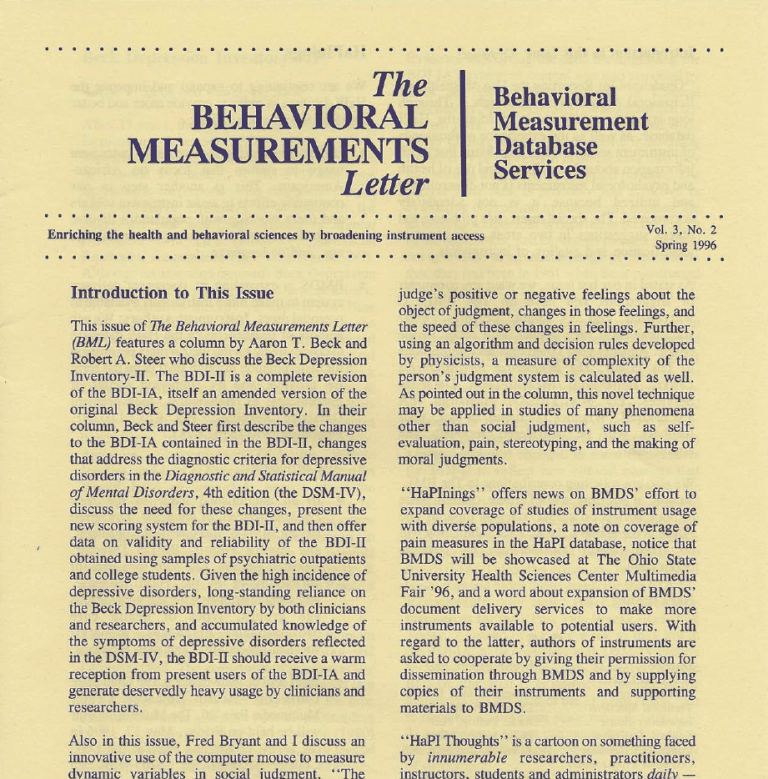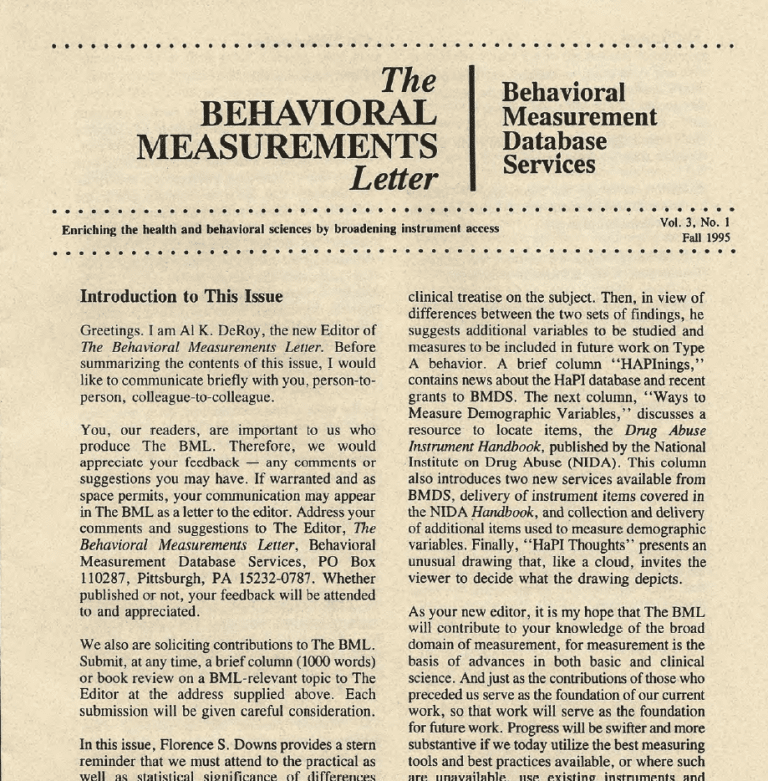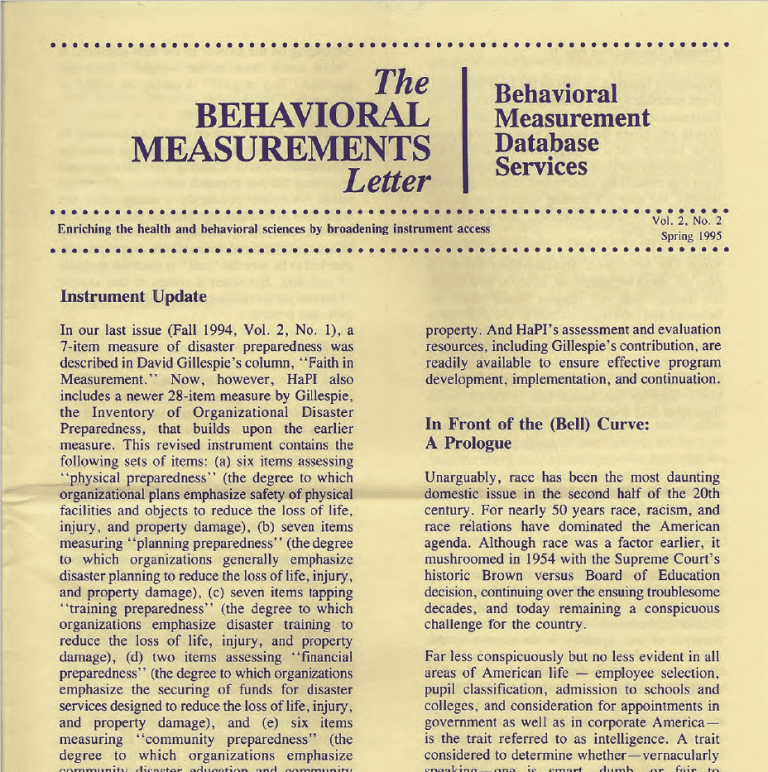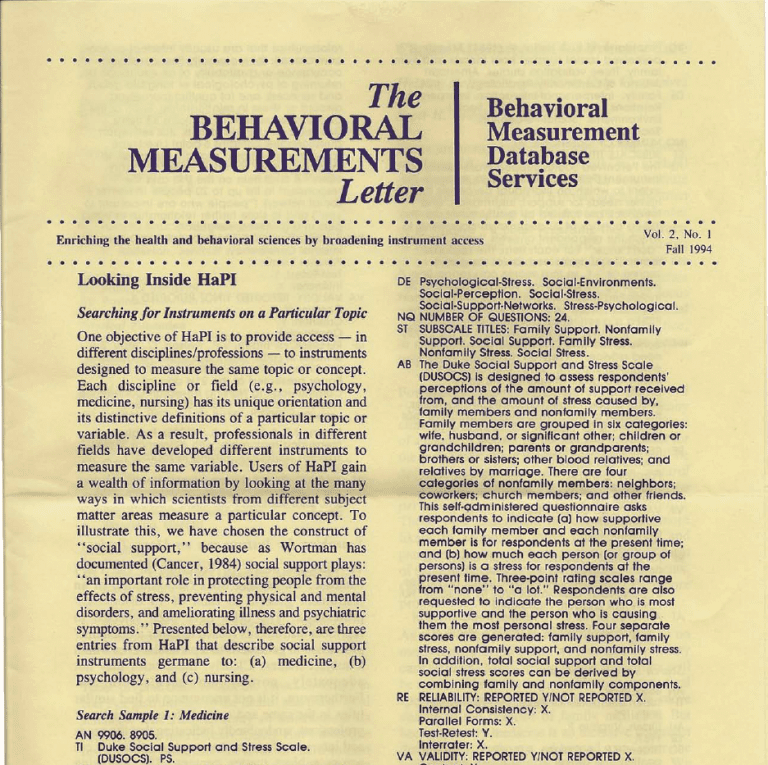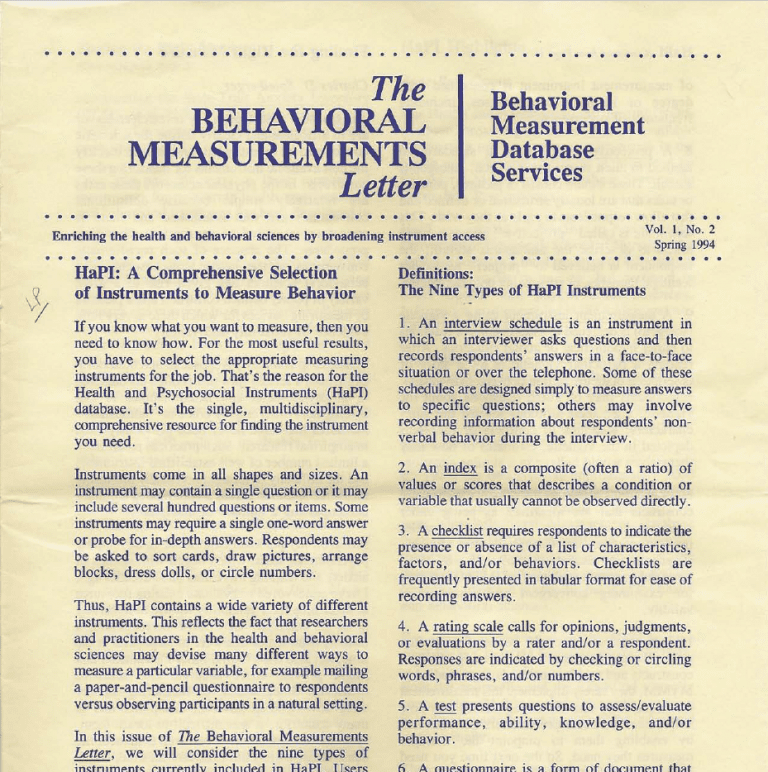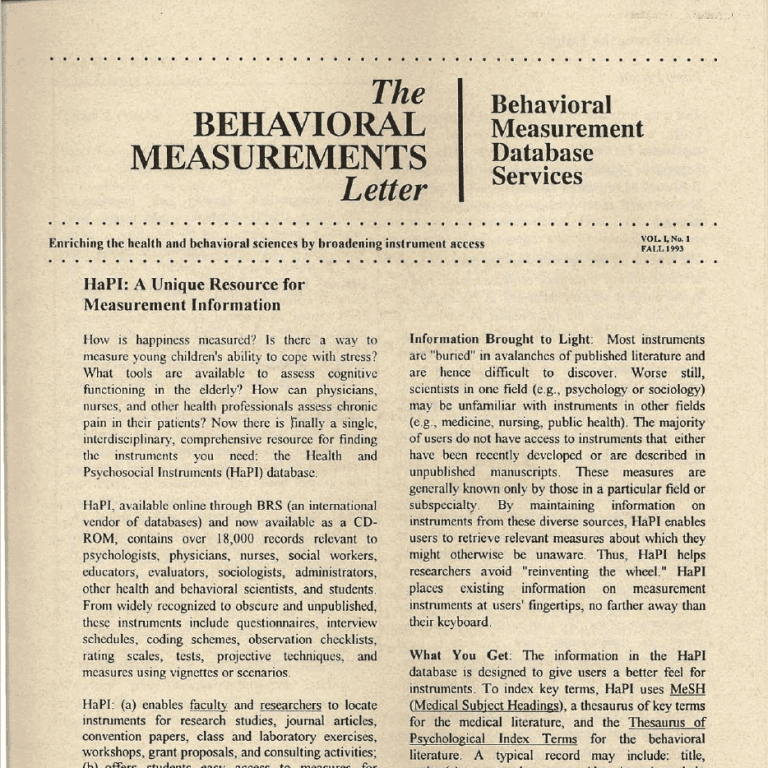Continued article from the The Behavioral Measurement Letter, Vol. 8, No. 1: Winter 2003
Missy Fleming and Fred Bryant
Americans seem to have a short attention span when confronting complex social issues; we prefer simple solutions to knotty problems despite contrary evidence. However, careful, systematic assessment is a necessary step in the process of logical problem-solving. Slighting the assessment phase can create solutions that become problems in themselves and further obfuscate understanding the original situation. Addressing youth bullying, a specific type of aggressive behavior, necessitates reliance on appropriate assessment to enhance understanding and identify reasonable solutions.
For years now, researchers and educators have been trying to get us to share their concerns about young people’s aggressive poor interactions. However, our culture still tolerates bullying as a rite of passage for male aggressors to enjoy and victims to endure. Aggressive girls are considered dominant “alpha” adolescents who rule like queen bees. Through acts of omission and commission, we subtly condone these behaviors, while considering victims’ reports to authority figures as a sign of weakness.
Until adolescent school shooters in the late 1990s gave this country a wake-up call, very few people were paying attention. Our current response to this situation is to build more prisons, use metal detectors at schools, and prosecute juveniles as adults. We blame the victims by referring to boys as “urban predators” and girls as “wannabe witches” who are just trying to assert themselves. No one deserves to be bullied, and young people’s reports of relentless taunting and teasing should be taken seriously. Recent research has discovered some facts about bullying and has identified situations in which bullying occurs.
What constitutes bullying? Bullying involves a pattern of repeated aggression that features a deliberate intent to harm or disturb a victim without regard for that person’s distress. Bullying is a form of conduct disorder, a psychiatric diagnosis that involves violating the basic rights of others and challenges social norms that are age- appropriate (American Psychiatric Association, 2000). Although most people think of bullying as physical, it can also be verbal or nonverbal.
What’s the extent of the problem? According to studies of young people in the United States, 17% of children attending grades 6 through 10 report having been bullied, and 19% report that they have bullied others (Nansel et al., 2001). Other researchers who interviewed rural youngsters in grades 4 through 6 found that 23% reported having had a recent bullying experience and 9% reported bullying others at least once a week (Melton et al, 1998).
Who are the bullies? Both boys and girls are guilty. Research suggests that boys are bullied primarily by other boys, whereas girls are bullied by both other girls and sometimes boys. Although boys are more likely to report physical bullying experiences, girls are more likely to report verbal and nonverbal forms of bullying (Nansel et al, 2001).
So, how do people get to be bullies? Bullies probably are made not born and their behavior is likely to begin at home. Research has associated bullying behavior with families that use physical discipline (Esplade, Bosworth, & Simon, 2000). In some families, children learn that aggression can help them get what they want and get things done. In this way, bullying shares several characteristics with child maltreatment and domestic violence (Limber, 2002).
Where does bullying happen? Bullying can take place anywhere, but schools are problem sites because kids are there and are often crowded. Some school climates tolerate physical and relationship aggression, especially by popular athletes and wealthy elites. Researchers who investigated school shootings found that the shooters described themselves as being persecuted or threatened by other students and that they were twice as likely as their homicide victims to have been targets of bullies (Dedman, 2000; Melor et al., 2001).
What’s the harm in bullying? Bullying behaviors have consequences for both the bully and the victim. According to one study (Nansel et al., 2001), young people who are bullies or victims of bullies are more likely to demonstrate poorer psychosocial adjustment, compared to youth who are not involved in bullying, and alcohol use is positively linked to bullying, while smoking and poor academic achievement are linked to both bullying and being bullied. Longitudinal studies of boys have found that bullies are three to four times as likely as their nonbullying peers to have multiple legal convictions by their early 20s (Olweus, 1993). Victims of bullying can suffer long-term psychological consequences and endure real, physical distress.
How are we assessing bullying behavior? Researchers have devised a variety of ways to measure bullying that use different methods of assessment. Available measures of bullying include single items taken from a larger instrument assessing a broader, higher-order construct, such as early loss (Burton & Topham, 1997), conduct disorder (Sonuga-Barke & Balding, 1993), or psychiatric symptoms (Achenbach & Edelbrock, 1979); multitem self reports designed to assess multiple dimensions of bullying, such as feelings of safety from bullying at school, reasons for not intervening to help a child being bullied, and self- reported school absenteeism (Slec, 1994); multitem parent reports of child behaviors (Quay & Peterson, 1996); multitem teacher reports of student behaviors (Price & Dodge, 1989); combined indices of mother and child reports (Kasen, Cohen, & Brook, 1998); and even coding schemes for making direct, nonreactive observations of actual bullying behavior in naturalistic settings, such as during free-play sessions at school (Price & Dodge, 1989).
The measurement of bullying is particularly challenging because instruments must not only be sensitive, valid, and reliable, but must also be non- threatening, multifaceted, and age- and culture- appropriate. Although the menu of available instruments offers some choices, more psychometric work is needed to explicate the conceptual similarities and differences among these alternative measures.
What’s the lesson to be learned? Both bullies and victims have a great deal to teach us. First, we need to measure their behavior and assess its impact on their lives. Second, we need to intervene with families that use aggression as a strategy for solving problems. These families need psychological, social, and financial assistance to break the cycle of domestic violence. Third, we need to change our social norms by challenging aggression as a solution to interpersonal difficulties. Bullies strong self-esteem is reinforced when their aggression continues to give them what they want. Bullies can develop empathy for others by learning new coping strategies and finding more adaptive ways to solve interpersonal problems. However, peer mediation is not one of these solutions victims live in fear of confronting their aggressors, and encountering one another can exacerbate the situation. Fourth, we need to create a climate in which bullying is not tolerated anywhere in our communities, and we need to encourage and support the reporting of victimization.
Accepting physical appearance, wealth, and status as the criteria for determining winners and losers subtly reinforces interpersonal aggression. Challenging these cultural norms is no small task, because we must intervene with young people who interact positively only with other bullies and who are reinforced for their aggression. Tolerating bullying behaviors leaves both bullies and their victims in the wake of aggression. Americans are up to this challenge; but we need to think long and hard about why we tend to cheer bullies as heroes and disdain our stereotypic victims as weak and inconsequential.
References
Achenbach, T. & Edelbrock, C. (1979). The Child Behavior Profile: Boys aged 12-16 and gals aged 6-11 and 12-16, Journal of Consulting and Clinical Psychology, 47, 273-23.3.
American Psychiatric Association, (2000). Diagnostic and statistical manuet of mental disanters (4th ed.). Text Revision.
Washington: DC: American Psychiatric Association.
Burton. M.V., & Topham, 1). (1997). Early loss experiences in psychotherapists, Church of England clergy, patients assessed for psychotherapy, and scientists and engineers, Psychotherapy Research, 7, 275-309.
Dedman, B. (2000, October 15). School shooters: Secret Service Findings. Chicago Sun-Timex.
Espelade, D., Bosworth, K., & Simun, T.E. (2000). Examining the social context of bullying behaviors in early adolescence. Journal of Counseling & Development, 78, 376-333.
Kasen, S., Chen, P., & Brook, J.S. (1998). Adolescent school experiences and dropout, adolescent pregnancy, and young adult deviant behavior. Journal of Adolescent Research, 13, 49-72.
Limber, S.P. (2002). Addressing youth bullying behaviors. In M. Fleming & K. Towey (Eds.), Proceedings of the Educational Forum on Adolescent Health: Youth bullying. Chicago: American Medical Association.
Meloy, JR., Hempel, A.G., Mohandie, K., Shiva, A.A., & Gray, D.T. (2001). Offender and offense characteristics of a conrandom sample of adolescent mass murders. Journal of the American Academy of Child and Adolescent Psychiatry, 40, 719-728;
Melton. G.B., Limber, S.P., Cunningham, P., Osgood, D.W., Chambers, J., Flers, V., Henggoler, S., & National, M. (1998). Violence among rival youth. Final report to the Office of Juvenile Justice and Delinquency Prevention.
Nansel. T.R., Overneck, M., Pills. R.S., Run, W.J., Simons. Menon, B., & Scheidi, P. (2001). Bullying behaviors among US youth: Prevalence and association with psychosocial adjustment. Journal of the American Medical Association, 285, 2094-2100.
Olweus, D. (1993). Bullying at school: What we know and what we can do. New York: Blackwell.
Price, J.M. & Dodge. K.A. (1989). Reactive and proactive aggression in childhood: Relations to peer status and social context dimensions. Journal of Minimal Child Psychology 17, 455-471.
Quay, H.C. & Peterson. D.R. (1996). Revised Behavior Problem Checklist (RBPC). Odessa, FL: PAR/Psychological Assessment Resources.
Slco, P. (1994). Situational and interpersonal correlates of anxiety associated with peer victimization. Child Psychiatry and Human Development, 25, 97-107.
Sonuga-Hare, H.J.S., & Balding, J. (1993), British parents” belief about the causes of three forms of childhood psychology disturbance. Journal of Abnormal Child Psychology, 71, 367-376
Missy Fleming is the Program Director for Child and Adolescent Health at the American Medical Association (AMA) and is a psychologist by education and training. Dr. Fleming has worked in adolescent health at the national level for the past fourteen years and prior to that directed a nursing school counseling center and held a Clinical appointment to Northwestern University Medical School in the Department of Community Health and Preventive Medicine. She has expertise in adolescent clinical preventive services training, implementation, and technical assistance, with a special interest in school-based health centers, parent resources, and delivering culturally effective health care to young people. Dr. Fleming directs the AMA’s Partners in Program Planning for Adolescent Health (PIPPAH) project, was a coprincipal investigator for a National Institute on Alcohol Abuse and Alcoholism project, participates in a number of national steering committees, and serves on the Advisory Board for the school-based health center in her community.
Read additional articles from this newsletter:
The Vital Importance of Measurement in High-Altitude Mountaineering
The Repercussions of Research Participation: Exploring Reactive Insight Effects
8-1-winter-2003

